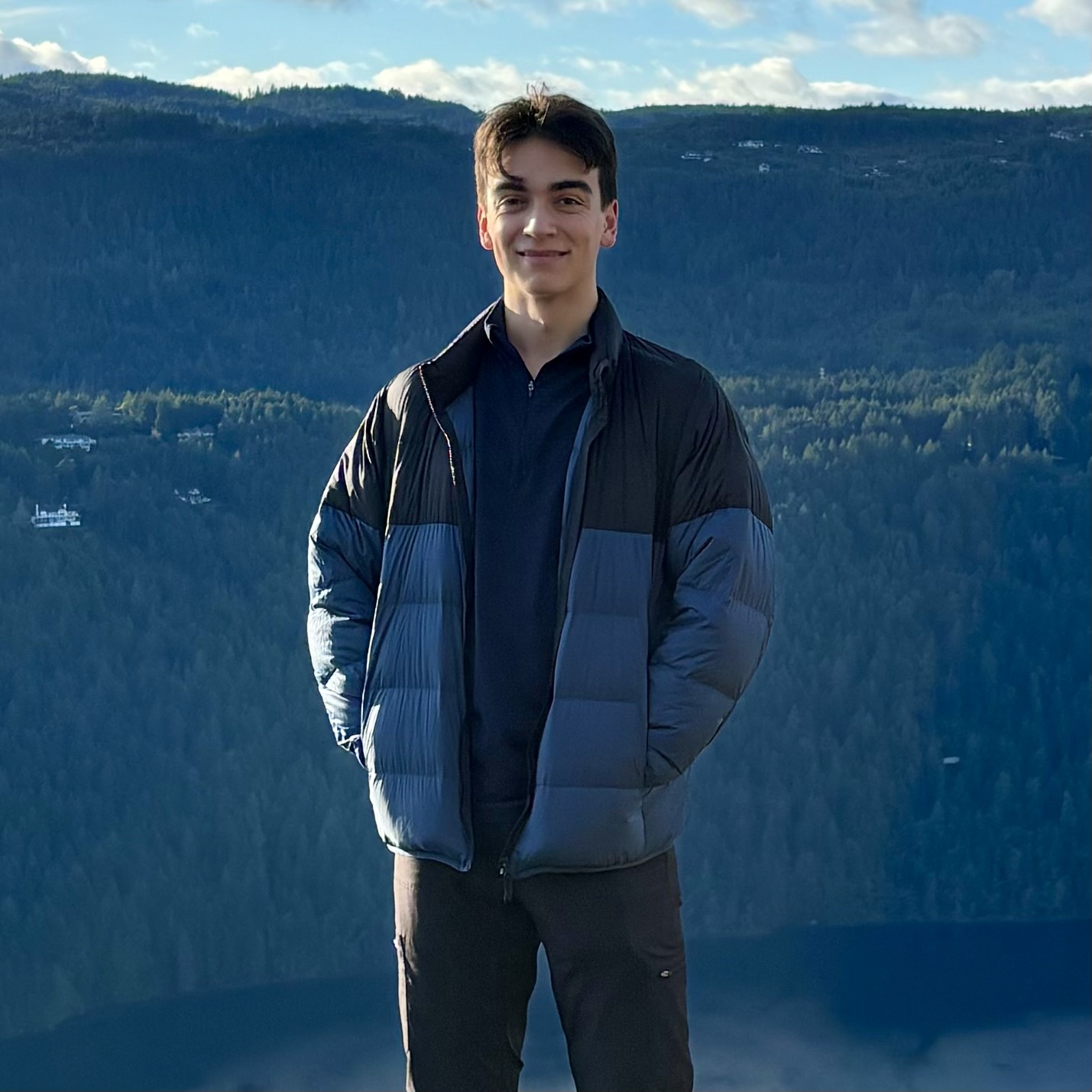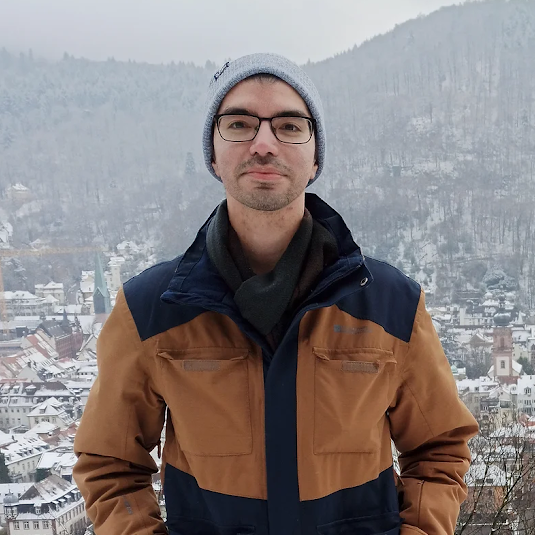The Planet Formation Lab
We're a group in the Department of Earth, Atmospheric and Planetary Sciences at MIT studying the formation of planetary systems. Our focus is on understanding the physical processes which form planets, the chemical complexity of the materials from which they form, and a characterization of their birth environment. We approach this from both observational and theoretical standpoints, using a wide range of ground- and space-based observatories, as well as state-of-the-art numerical simluations.
Use the links to the side to learn more about who we are and what we do!
Research
When, where and how do planetary systems form? These are the sort of questions the Planet Formation Lab aims to answers. To tackle these quetsions we use a combination of ground and space-based observatories and state-of-the-art numerical simulations. By combining multi-wavelength observations with cutting-edge theoretical models, we are able to start piecing together the planet formation process and understand the origins of our own Solar System.
Planets, both those within our Solar System and beyond, form in protoplanetary disks, residual material from the star formation phase which settles around a newly formed star. As such, a vast majority of our work utilizes sub-mm interferometric observations from ALMA to trace the gas and dust present in these disks, allowing us to characterize the physical and chemical conditions in which planetary systems form, yielding critical insights to the beginnings of planetary systems. Such observations can be confronted with theoretical models of the (magneto-)hydrodynamical and chemical evolution of the gas to understand the relative importance of competing processes.
In addition to studying the formation environment, we search for evidence of planets which have only recently been formed. These planets are still embedded in their natal protoplanetary disk, making their detection extremely challenging. Observatories such as JWST, or ground-based counterparts like the VLT or Magellan telescopes, provide the best opportunities to detect emission from these elusive planets, and are routinely used by The Planet Formation Lab for this purpose. The exoALMA project, led by Prof. Teague, provides an alternative approach and aims to detect embedded planets through their influence on their parental protoplanetary disk.
Group Members
Here you will find out about who is currently associated with the Planet Formation lab. We are always on the lookout for people to join the group. If this would be something you are interested in, or would like to learn more about opportunties to work with telescopes, then see the Join Us section below.
Group Leader

|
Prof. Richard TeagueRichard Teague is an Assistant Professor in MIT's EAPS and currently holds the Kerr-McGee Development Chair. He works primarily with sub-mm interferometric observations of protoplanetary disks with a view to unveiling the planet formation process. Prior to starting at MIT, he studied for his PhD at the Max Planck Institute for Astronomy, and worked at the University of Michigan and at the Harvard & Smithsonian | Center for Astrophysics as a Submillimeter Array Fellow. |
Graduate Students

|
Leah AlbrowLeah is a first-year PhD student in EAPS at MIT. She did her undergraduate degree at the University of Canterbury in New Zealand. Leah is currently working on data from the ALMA telescope to learn more about the 3D structure of the protoplanetary disk PDS70. When not studying, Leah enjoys hiking, reading, and going to concerts. |

|
Abby ColclasureAbby is a masters student in the Department of Earth, Atmospheric, and Planetary Sciences (EAPS) at MIT. She is an observational astronomer, and her current research focuses on the Uranian satellites and Kuiper Belt Object Ixion. Previously, Abby completed a BS in physics and in EAPS at MIT. |

|
Jensen LawrenceJensen is a second-year planetary science PhD student in MIT’s Department of Earth, Atmospheric and Planetary Sciences. His research interests lie in drawing connections between protoplanetary disks, exoplanets, and the Solar System to better understand planet formation and evolution. Currently, he is working on disk midplane temperature structure and high-contrast H-alpha imaging of accreting gas giants. Prior to graduate school, he obtained a BSc in mathematical physics from the University of Waterloo. |

|
Bella MaciasIsabella Macias is a first-year PhD student in the Department of Earth, Atmospheric, and Planetary Sciences (EAPS) at MIT. Her research focuses on measuring the mass of protoplanetary disks to gain insights into their evolution into planetary systems. With interests also in stellar spectra, exomoons, and asteroids, she aims to advance our understanding of protoplanetary disks and how they form young, potentially habitable exoplanets. Outside of her research, Bella is passionate about STEM outreach, contributes actively to the UnidosNow nonprofit, and enjoys binge-watching the latest sci-fi shows. |
Postdoctoral Researchers

|
Dr. Marcelo Barraza-AlfaroMarcelo is a postdoctoral researcher, having earned a PhD at the Max Planck Institute for Astronomy in Heidelberg. His research interest is gas turbulence in planet-forming disks and its observational signatures. |

|
Dr. Lisa WölferLisa's research is focused on the environment of young planets, also known as protoplanetary disks. She is particularly interested in the gas substructures and dynamics of those disks and how they relate to the physical, chemical, and planet forming processes. For this, she combines observations of molecular species in disks with different modeling techniques. Moreover, she has experience with hydrodynamical simulations. Lisa received her PhD in March 2023 from Leiden Observatory with promotors Prof. Ewine van Dishoeck and Prof. Barbara Ercolano. Her thesis titled “Ingredients of the planet-formation puzzle: Gas substructures and kinematics in transition discs” can be downloaded here. |
Undergraduate Students

|
Erin CussonErin is a sophomore at MIT majoring in physics and minoring in astronomy. She is broadly interested in observational astronomy and astrophysics and has experience with exoplanet candidate observation. She is currently working on characterizing the chemical complexity of a large protoplanetary disk and exploring the features of early planet formation. |
Previous group members include Anika Nath, Carol Chen, Anna Orgel and Aidan van Duzer.
Join Us
If you are an undergraduate student at either MIT or Wellesly College and interested in conducting research within the Planet Formation Lab, please fill out this form to share your interests, background and availability. If your interests are more related to the use of telescopes, the Planet Formation Lab also helps coordinate the Student Observing Program at MIT's Wallace Astrophysical Observatory and internships at the Smithsonian's Submillimeter Array. For opportunities related to these programs, please find the details on the MIT Experiential Learning website. Please note that given the number of requests recieved, direct email requests for UROP positions will not be responded to.
If you are interested in applying to be a graduate student within EAPS, please familiarize yourself with the information on the page about graduate emissions from MIT's Office of Graduate Education. All admissions are conducted via this portal. Please reach out to EAPS's Application Mentorship Program for guidance with applying.
If you are a postdoctoral researcher and would be interested in bringing a fellowship to MIT, we would encourage you to check your eligibility for the 51 Peg b Fellowship, the NASA Hubble Fellowship and, for American citizens, the NSF Postdoctoral Fellowship. We note that there is also an EAPS Distinguished Fellowship and an MIT School of Science Fellowship which may be applicable depending on your research. Any open positions within the group will be advertised on the AAS's Job Register.
In the News
Here's a selection of scientific press releases which feature work from members of the Planet Formation Lab. Click the titles to see the original press release.
| ALMA Detects Hallmark “Wiggle” of Gravitational Instability in Planet-Forming Disk | 9/2024 |
| New observations of the AB Aur system were found to show stunning evidence of a disk exhibiting gravitational instabilities. Jess Speedie developed new analysis techniques to unravel the complexities of the data and place tight, quantitative constraints on the dynamical structure of the disk. These results provide a roadmap for the study of ever more complex systems. | |
| Exotrojans in the PDS 70 System | 7/2023 |
| In this work led by Olga Balsalobre-Ruza, we find evidence for 'exotrojans', analogues of the Trojan asteroids in our own Solar System, in the PDS 70 system. Such trojans should settle in clumps a little ahead and a little behind an orbiting planet in Lagrange points. In combination with the work of Dr. Feng Long, this suggests that exotrojans provide a powerful method for locating unseen exoplanets. | |
| Astronomers spot a star swallowing a planet! | 5/2023 |
| Led by Kishalay De, this work reports the fist detection of an infrared transient which is interpreted as a dying star engulfing a Jupiter mass planet orbiting it. This is the fate for a majority of stars, including our own Sun, and should be a relatively common occurance in the Galaxy. Our on Earth is likely to under go a similar fate far in the future. | |
| ALMA Makes First-Ever Detection of Gas in a Circumplanetary Disk | 8/2022 |
| In work led by Jaehan Bae we were able to make the first detection of gas in a circumplanetary disk, AS 209b, only the third circumplanetary disk to be discovered. This detection used the archival MAPS data and was found in both 12CO and 13CO emission. With a detection of gas to hand we have a unique opportunity to probe the mass content of a moon forming disk and understand the temperature structure of the disk. | |
| First Results from the MAPS Large Program | 9/2021 |
| We released the first 20 papers from the Molecules with ALMA at Planet-forming Scales (MAPS) collaboration. This Large Program, lead by PI Karin Öberg and co-PIs Yuri Aikawa, Ted Bergin, Vivi Guzman and Catherine Walsh, explored the chemical context of five protoplanetary disks at an unparalleled spatial resolution and sensitivity. The results from this program range from the mapping of the 3D structures of disks, to probing the C/O ratios across the disks and searching for kinematical substructures driven by embedded planets. | |
| First Clear Detection of a Moon-Forming Disc Around an Exoplanet | 7/2021 |
| This work builds upon our previous detection of circumplanetary material in PDS 70. By combining several data sets we were able to achieve an unparalleled sensitivity and angular resolution to spatially resolve a circumplanetary disk around PDS 70c. No only do these observations provide definitive proof of circumplanetary disks, but allow for the first measurements of their size and mass content. | |
| Gas Waterfalls Reveal Infant Planets around Young Star | 10/2019 |
| Building on the previous kinematical detection of planets, we showed in this work how to extract 3D velocity structures from observations. This allowed us to detect 'meridional flows' around the three previously detected planets. These flows can transport of material from the chemical rich atmospheric regions of a disk down to the still-forming planets, allowing us to inventory atmosphere-building material first hand. | |
| Moon-Forming Circumplanetary Disk Discovered in Distant Star System | 7/2019 |
| In this work we presented the first tentative evidence for a sub-mm detection of circumplanetary disks, moon-forming material that surrounds a newly born planet. PDS 70 was known to host (at least) two planets based on near infrared observations, however these observations provided the first evidence for the long hypothesized circumplanetary disk. | |
| Trio of Infant Planets Discovered around Newborn Star | 6/2018 |
| Here, we were one of two teams to simultaneously demonstrate we can detect exoplanets by their influence on the gas dynamics in their parental disk. We demonstrated a new method to measure the rotation velocities of the disk to a meters-per-second precision, enough to witness deviations driven by two Jupiter mass planets. | |
| Probing the 3D Structure of a Protoplanetary Disk | 2/2017 |
| This work was the first to demonstrate a ringed structure in molecular emission which was coincident with a gap previously detected in the same grains probed by near infrared observations. The data, both at sub-mm and NIR wavelengths, were able to be reproduced with the presence of a planet at 90au in the disk of TW Hya. |